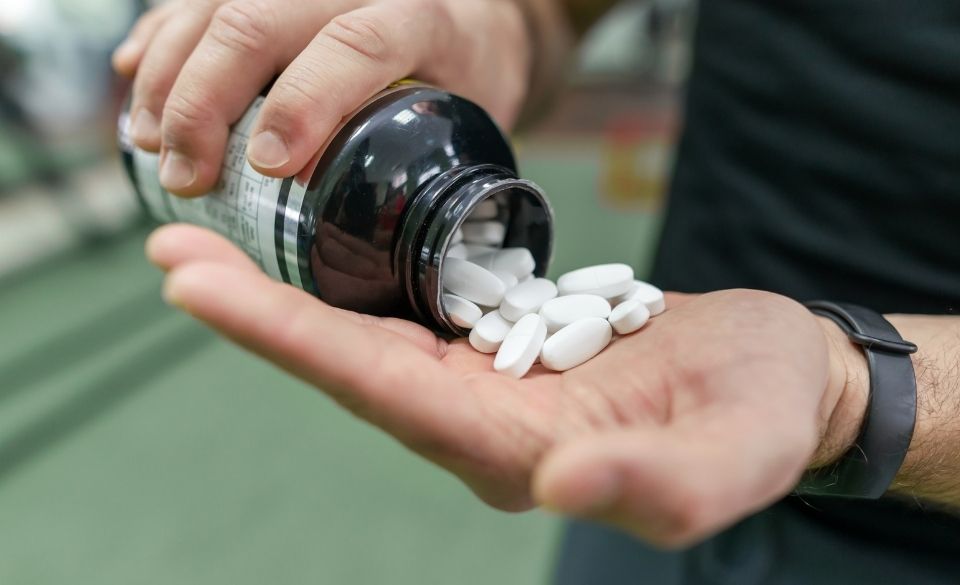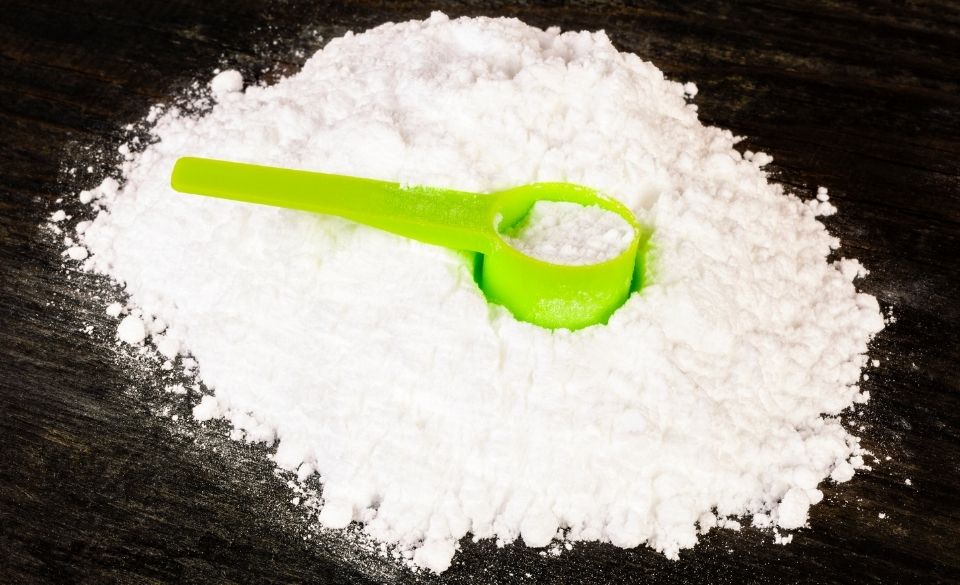
How To Cycle & Take Creatine – A Complete Guide to Supplementation
Page Contents
If you are a regular gym enthusiast, you may have heard of creatine. Creatine is known as one of the best supplements for improving your performance in the gym.
Studies have shown that it can help improve strength and increase muscle mass and overall performance. It has also been shown to provide numerous health benefits, like protecting the body against neurological disease.
However, many people that use creatine have yet to learn how to cycle creatine correctly.
In this article, we explain how to take creatine the right way and teach you some of the benefits of this widely used supplement. We also teach you everything else you need to know about supplementing with creatine.
What Is Creatine?
Creatine is a substance found in our muscle cells. This naturally formed substance helps your muscles provide energy that can help you lift weights or provide energy during high-intensity exercise.
Because of this, creatine is a widely used supplement among athletes. This includes athletes that need muscle mass, strength, and explosive power to perform better.
Creatine shares many similarities with amino acids. This is because the body can produce creatine from the amino acids glycine and arginine.
Many factors can influence the amount of creatine in the body. This includes exercise, the amount of meat you eat, muscle mass, and also the body’s testosterone and IGF-1 levels.
Over 90-95% of the body’s creatine stores are stored in the muscles. This is stored in the form of phosphocreatine. The other 5-10% is located in the brain, kidneys, and liver.
When you add creatine supplementation into your diet, you increase the amount of phosphocreatine in the body. This, in turn, helps the body produce more energy. This energy is called ATP. When you have a lot of high-energy molecules (ATP), studies have shown that the body will perform better while exercising.

How To Take Creatine?
Learning how to take creatine the right way is relatively easy. It is recommended to start with a loading phase first. This can help increase the muscles storage of creatine.
To start the loading phase, begin by taking 20 grams per day for 5 to 7 days. The 20 grams should be broken up into 4 servings of 5 grams throughout the day.
During these first seven days, it is recommended to increase the amount of protein you take. It is also recommended that you take it with a meal consisting of protein and carbohydrates.
After the first 5-7 days, you need 3-5 grams per day. This will help maintain high levels of creatine in the muscles.
If you decide against the loading phase, you can simply consume 3-5 grams of creatine daily. However, it will then take 3-4 weeks for you to maximize the amount of creatine storage in the body.
If you decide to supplement with creatine, you must take the supplement with water and hydrate regularly. This is because creatine pulls water into your muscle cells.
Should You Cycle Creatine?
Studies have shown that creatine maintains the same level of effectiveness whether you cycle it or not. However, it is recommended to have an increased dosage during the first week (20 grams per day), as this will help load the muscles full of creatine. However, after the first week, there is no need to cycle the supplement, as it takes a long time for the body to completely purge creatine.
Following the initial loading phase, you can level off the amount of creatine taken (3-5 grams per day). This can then be taken ongoing for 28 days.
Like most supplements, it is a good idea to take a break from it, as it can be beneficial for the liver and kidneys. However, this is generally not necessary, as the supplement is perfectly safe for 5 years.
What Happens If You Don’t Cycle Creatine?
There are no downsides if you decide not to cycle creatine, and cycling creatine is generally not recommended anyway. That means you don’t need to stop taking it for a period of time. The only downside to stopping creatine is the loss of potential gains.
Side Effects of Creatine – What Are They?
Learning how to take creatine correctly can prevent some of the side effects. However, since creatine is one of the most researched supplements on the market, there are very few.
Studies lasting up to four years have found no side effects to this supplement. The studies have also shown that there have been no adverse effects on the liver and kidneys after 21 months of supplementing.
However, if you already have a pre-existing liver or kidney problem, it is widely recommended that you speak to your doctor before using this supplement.
Even though some people associate creatine with cramps and dehydration, there has been no research to support this. In fact, some studies have shown that it may reduce cramps and dehydration while exercising in high temperatures.
With all this being said, one study in 2009 found that creatine supplementation may contribute to hair loss. This is because a hormone called DHT is increased with creatine supplementation. This mean’s if you struggle with hair loss, it may be wise to stay away from this supplement.



